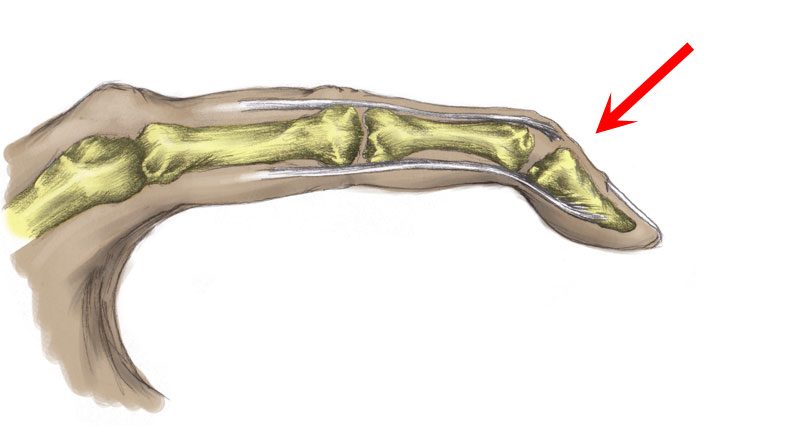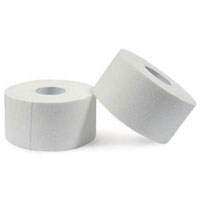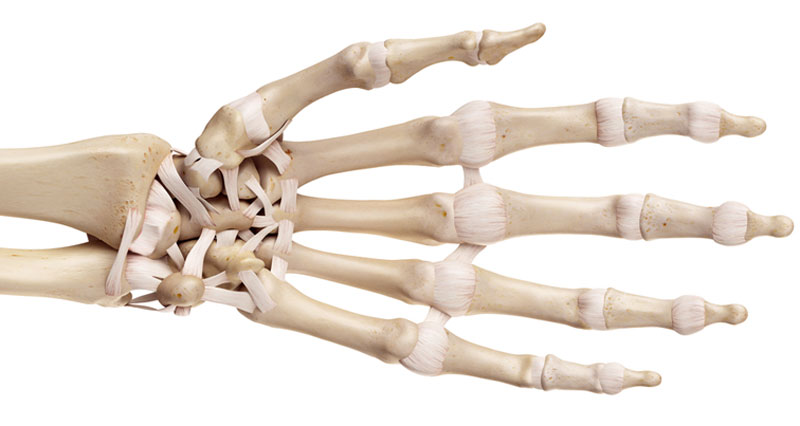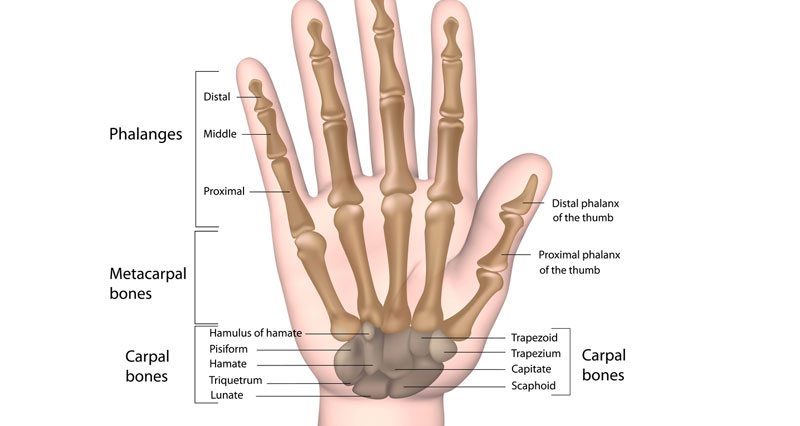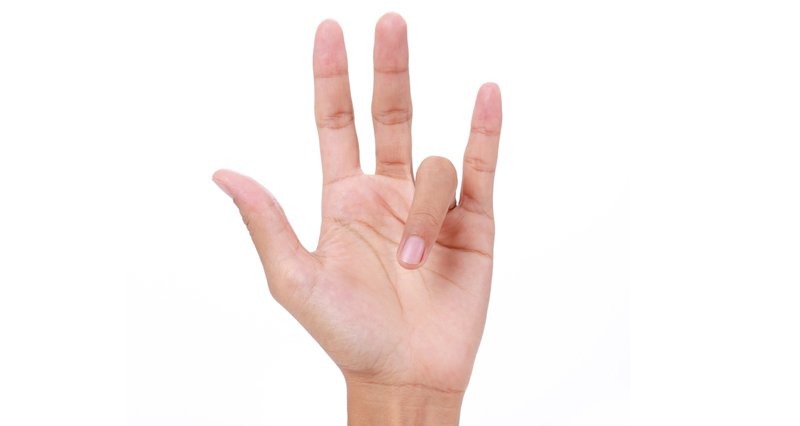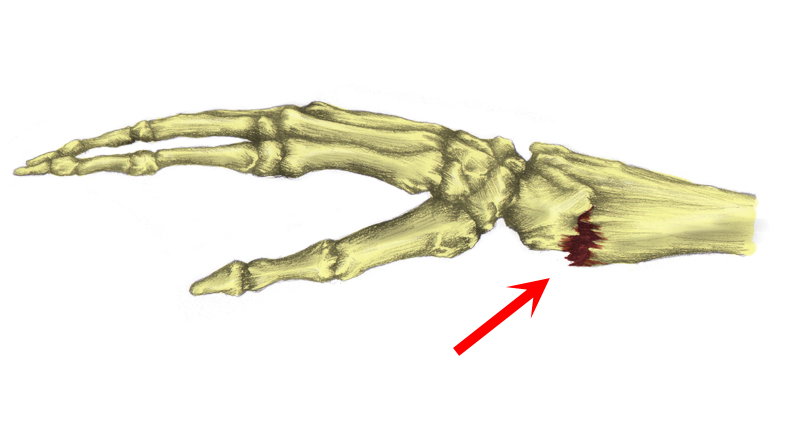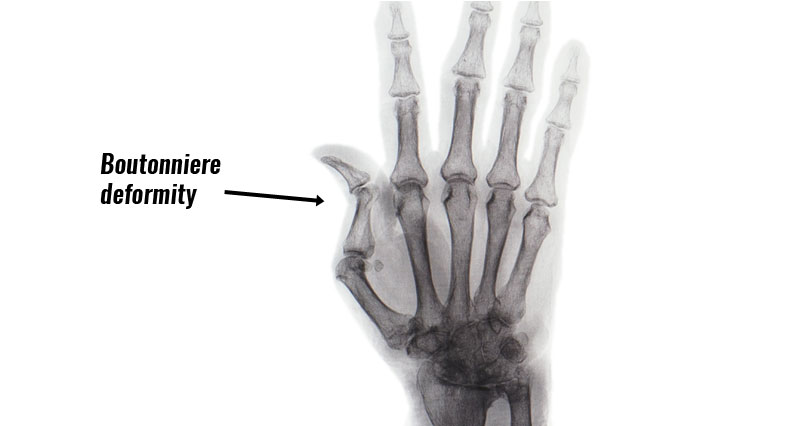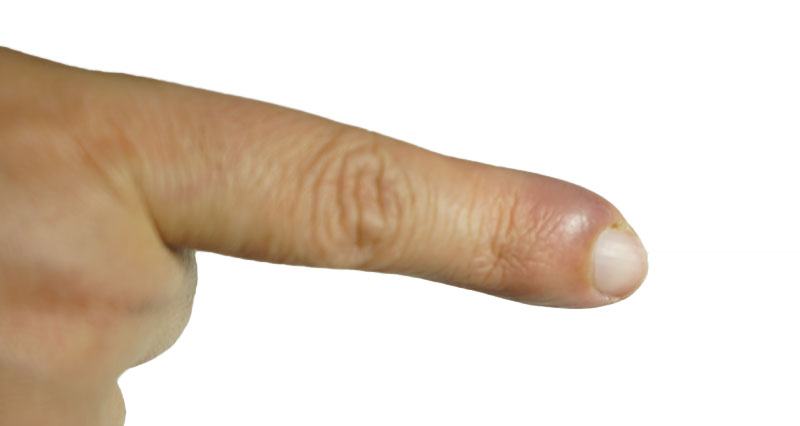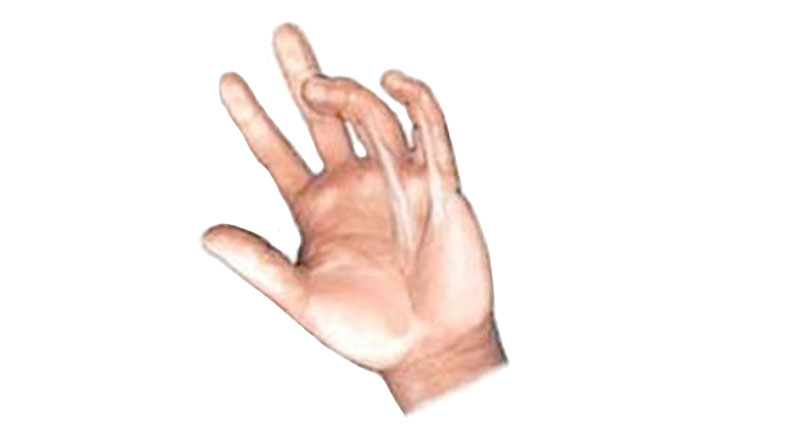If you have a Mallet finger then you will be unable to straighten the end joint of your finger without assistance. It is caused by being struck on the end of the finger by a ball or opponent. The severity of the injury varies from stretching of the tendon to the tendon coming detached from the bone.
Symptoms of mallet finger
- Symptoms of a mallet finger include pain at the end of the finger.
- You will have particular tenderness when touching the back of your finger.
- A giveaway sign is being unable to straighten the end joint of the finger without assistance. Or if you can it will be considerably painful.
What is Mallet Finger?
There are no muscles in the fingers. Instead, they are moved by long tendons which connect to muscles in the hand and forearm. When the muscles contract, the tendons move in channels through the wrist and up to the end of the fingers. As a result, movement is produced.
The tendon of the extensor digitorum communis muscle passes up the back of the finger and enables the end joint to straighten (extend). If this tendon is damaged, torn or injured, then the ability to straighten your finger is affected.
The degree of damage can range from a minor stretching of the tendon to a complete rupture. An avulsion strain occurs when the tendon tears, pulling a small piece of bone with it.
Causes
Mallet finger occurs most frequently from a ball, for example, a basketball striking the fingertip. The impact forces your finger to bend, at the same time as the extensor muscles try to straighten it. As a result, the tendon can tear. It can also be injured doing work-related or household activities such as making the bed.
Treatment
- Treatment depends on the severity of the injury.
- An X-ray or MRI may be used to determine if the tendon is torn or if there is an avulsion or a fracture to the end bone of the finger.
- If there is no avulsion or fracture, then a mallet finger splint may be worn for up to eight weeks. This holds the end joint of the finger in an extended position to allow the tendon to heal correctly.
- It is also recommended that this type of splint or taping is used for an additional 1-2 months when returning to sport. Also, it might be beneficial overnight for sleeping.
- It is essential that you wear the splint all the time, except when washing. Even then, they must keep it straight. Failure to be strict on wearing a mallet finger splint may result in your injury not healing correctly. You will, therefore, be left with a drooping fingertip, requiring further treatment or surgery.
- If this is the case or in more complicated injuries where the tendon has come completely away from the bone, mallet finger surgery may be performed to reattach the tendon to the bone and realign any fractures. Again a period of immobilization will follow.
Mallet finger surgery
Mr Elliot Sorene MBBS FRCS (Tr & Orth) EDHS Consultant Orthopaedic, Hand & Upper Limb Surgeon explains Mallet finger surgery.
It is often caused by a ball such as a basketball hitting the end of the finger or even another player impacting with the end of the finger. Also, cases are known where the patient falls onto the end of the finger or stubs the finger doing household activities such as making a bed and causing a mallet finger injury.
After the injury has occurred the patient will not be able to extend their finger because the tendon has been pulled off the bone, known as an avulsion strain. If this injury is caught early on then it can be treated conservatively with the patient having the finger immobilized in a straightened position with a Mallet finger splint for between 6 to 8 weeks followed by a month of wearing the splint at night. In the vast majority of patients, this will heal.
For a few patients, the finger will still droop at the end but this is probably due to the patient not wearing the splint all the time and not keeping the finger in a completely straightened position. If this happens, and your mallet finger does not heal then there is the option of surgically reattaching the tendon and reconstructing the fingertip where results are typically very good.
